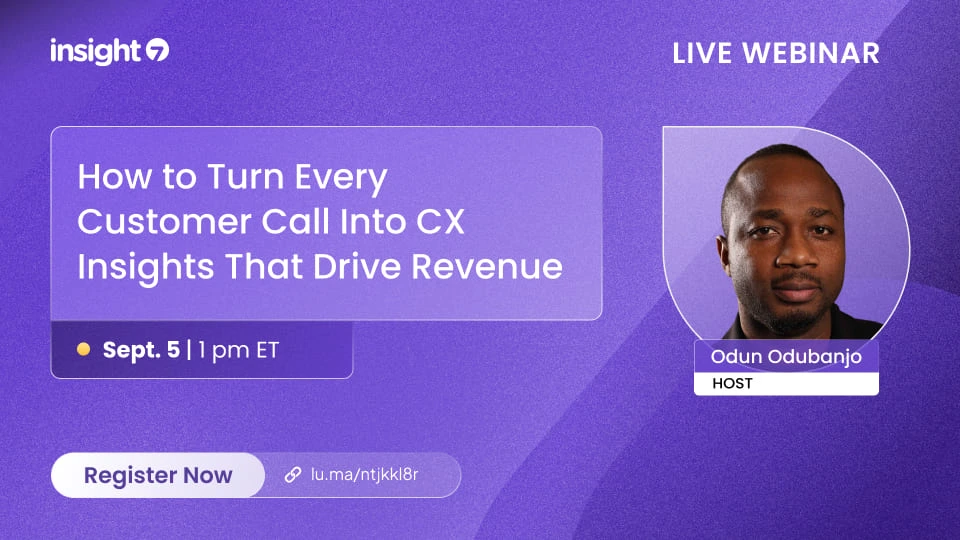Consumer Analytics and Marketing Strategy: Core Concepts
-
Bella Williams
- 10 min read
Consumer Insights Strategy plays a fundamental role in shaping successful marketing plans. In a world saturated with choices, understanding what drives consumer behavior is paramount. Companies today need to go beyond basic analytics to uncover deeper insights into customer needs, preferences, and pain points. By prioritizing data collection and interpretation, businesses can craft strategies that resonate with their audience, fostering loyalty and engagement.
This section will delve into the essence of a well-defined Consumer Insights Strategy. We will explore how identifying and analyzing consumer data shapes business decisions. With the right approach, organizations can ensure that their marketing efforts are not only targeted but also impactful, creating meaningful connections with their customers.
Generate visualizations from your qualitative data. At Scale.

Leveraging Consumer Insights Strategy for Effective Analytics
A strong Consumer Insights Strategy is essential for effective analytics, driving businesses to understand their customers deeply. This strategy begins with identifying key data sources, which provide critical information on consumer preferences, behaviors, and expectations. By gathering data from surveys, social media interactions, and transaction records, businesses can paint a clearer picture of who their customers are and what they desire.
Next, analyzing consumer behavior patterns plays a vital role in harnessing these insights. Businesses should explore trends and identify correlations within the data to refine marketing tactics and product offerings. This analysis informs decision-making, allowing brands to tailor their strategies for maximum impact. Ultimately, integrating these insights into core business processes not only enhances marketing effectiveness but also fosters a customer-centric culture that cultivates loyalty and fosters growth.
Identifying Key Consumer Data Sources
To develop a robust Consumer Insights Strategy, identifying key consumer data sources is critical. Comprehensive analysis starts with gathering data from various platforms, including social media, surveys, and website analytics. Each of these sources offers unique insights into consumer behavior and preferences. Social media channels, for instance, allow brands to observe real-time interactions, helping to gauge sentiment and engagement.
Additionally, surveys provide direct feedback from consumers, making them invaluable for understanding customer needs and expectations. By harnessing this data, businesses can fine-tune their marketing strategies to align with consumer desires. Notably, website analytics play a crucial role in tracking user behavior, revealing how visitors interact with content. Therefore, a strategic approach to data collection and analysis enables companies to uncover actionable insights, paving the way for effective marketing intervention and enhanced consumer relationships.
Analyzing Consumer Behavior Patterns
Understanding how to analyze consumer behavior patterns is crucial for developing a successful Consumer Insights Strategy. This process begins with gathering diverse data from various sources, including surveys, social media interactions, and purchase histories. By collecting this information, businesses can discern trends, preferences, and pain points that drive consumer decisions. Analyzing these patterns enables marketers to connect more deeply with their audience, ultimately fostering loyalty and enhancing brand reputation.
Next, it is essential to adopt multiple analytical approaches. Utilizing both quantitative and qualitative methods allows for a more comprehensive view of consumer behavior. Quantitative data offers measurable insights, while qualitative analysis uncovers the motivations behind consumer actions. With an in-depth understanding of these dynamics, businesses can create targeted marketing strategies that resonate with their audience. As brands adapt to consumer needs, they can optimize their offerings, leading to increased satisfaction and revenue growth.
Evaluate Performance on Customer Calls for Quality Assurance.
Creating a Robust Consumer Insights Strategy in Marketing
A robust Consumer Insights Strategy begins with understanding who your consumers are and what drives their decisions. This strategy requires segmenting consumers based on demographics, behaviors, and preferences, which allows for more personalized marketing efforts. By tailoring messages to specific segments, businesses can create deeper connections and increase engagement.
In addition, integrating consumer feedback into strategic planning is essential. Gathering insights from customer interactions, surveys, and reviews helps brands identify trends and areas for improvement. This continuous feedback loop ensures that marketing strategies evolve in response to shifting consumer needs, leading to more effective outcomes. By implementing these key elements, a well-crafted Consumer Insights Strategy can significantly elevate a company’s marketing effectiveness and foster lasting relationships with consumers.
Segmenting Consumers for Personalized Marketing
Understanding the nuances of your target audience is crucial for creating effective marketing strategies. Segmenting consumers for personalized marketing allows businesses to tailor their offerings based on specific characteristics and preferences. By dissecting the market into distinct groups, companies can develop targeted campaigns that resonate deeply with each consumer segment. This approach drives engagement and enhances the overall customer experience.
To effectively segment consumers, consider these key factors:
- Demographics: Analyze age, gender, income, and education level to identify who your customers are.
- Geographic Location: Understand regional preferences that influence buying behavior.
- Psychographics: Dive into the attitudes, interests, and lifestyle choices of your audience.
- Behavioral Data: Examine purchase history and online activity to forge deeper connections.
By employing a comprehensive Consumer Insights Strategy that incorporates these factors, businesses can foster meaningful relationships with their customers, ultimately leading to increased loyalty and sales. Embracing personalized marketing is not just a trend; it is essential for long-term success in today’s market.
Integrating Consumer Feedback into Strategic Planning
To effectively integrate consumer feedback into strategic planning, organizations must first establish robust mechanisms for gathering insights. This could include customer surveys, focus groups, and direct feedback from service interactions. Understanding what consumers value allows businesses to make informed decisions that align with customer needs and market demands. Additionally, ongoing feedback ensures that strategies remain relevant as consumer preferences evolve over time.
Next, translating these insights into actionable strategies requires collaboration across departments. Marketing teams should work closely with product development to ensure that consumer feedback directly informs product enhancements. In turn, sales teams can utilize this information to fine-tune their approaches, ultimately leading to improved customer satisfaction. By prioritizing consumer insights strategy, organizations can create a more agile and responsive framework for their planning processes, ensuring they are not only meeting but exceeding consumer expectations.
Conclusion: The Future of Consumer Insights Strategy in Marketing
Consumer Insights Strategy will continue to evolve as technology advances and consumer preferences shift. Companies must adopt a forward-thinking approach to glean actionable data from various sources. With the rise of artificial intelligence, businesses can now analyze trends and feedback in real-time, enabling swift adaptations to their marketing strategies.
Looking ahead, integrating a comprehensive Consumer Insights Strategy will be crucial for sustained growth. Marketers must harness the power of data to create personalized experiences that resonate with their target audiences. By prioritizing consumer understanding, businesses will ensure they remain relevant and competitive in an ever-changing market.







